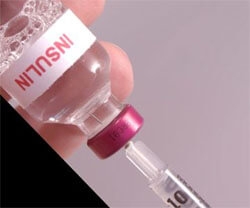Insulin preparations are vital for patients with type 1 diabetes. Patients with type 2 diabetes also often need to take insulin preparations. Therapy for type 2 diabetes begins with taking drugs in the form of tablets, which increase the sensitivity of tissues to insulin and reduce the absorption of glucose and the digestive tract. In the presence of certain medical indications, insulin preparations are prescribed for patients with type 2 diabetes. What are the insulin preparations and how are they produced? When is insulin therapy necessary?
Indications for prescribing insulin preparations
There are general indications for prescribing insulin preparations in the presence of diabetes mellitus:
- pancreatectomy;
- type 1 diabetes;
- frequent development of hyperosmolar coma, ketoacidotic coma;
- some conditions in type 2 diabetes:
- major surgical interventions;
- lack of effect and compensation when taking the maximum daily doses of drugs in tablets to lower blood glucose;
- fasting glycemia more than 15-18 mmol/l;
- signs of insulin deficiency in the blood – gradual weight loss, presence of ketosis, hyperglycemia;
- macrovascular complications, infectious diseases that are accompanied by decompensation of carbohydrate metabolism;
- late stages of complications of diabetes.
- Ineffectiveness of diet therapy in compensating for diabetes in pregnancy.
Insulin preparations are available in animal origin, human insulin and insulin analogues.
Main types and production technology of insulin preparations
Technological progress has led to a decrease in the use of porcine insulins, which differ from human insulin by only one amino acid. When making human insulin, a semi-synthetic method is used in which porcine insulin is taken and one amino acid is replaced by which the insulins differ. The highest quality insulin preparations are produced by genetic engineering. For their manufacture, the region of the human genome responsible for the synthesis of insulin is associated with the genome of a yeast culture or E. coli. The cultures then begin to produce human insulin. Insulin analogues are created by rearranging different amino acids, resulting in drugs with good pharmacokinetics.
 Insulin lispro is an ultra-rapid insulin analogue that reduces sugar levels 15 minutes after ingestion.
Insulin lispro is an ultra-rapid insulin analogue that reduces sugar levels 15 minutes after ingestion.
Characteristics of insulin preparations. Insulin Injection Technique
Ultra-short-acting preparations are used right before meals due to the rapid development of the effect, which lasts for 3 hours.
Short-acting insulins are administered within half an hour of a meal, and their effectiveness lasts for 4-6 hours.
Intermediate-acting insulins are proteins that absorb insulin when they enter the body. This significantly slows down its absorption from the subcutaneous depot. Such drugs are administered only subcutaneously, their effectiveness lasts for 12 hours.
Injection technique is important for successful insulin therapy. In order to maintain therapy, insulin is injected subcutaneously. Short-acting insulin injections are recommended in the subcutaneous fat of the abdomen, and long-acting insulin should be injected into the thigh or upper arm. Injections should be made into the subcutaneous tissue through a widely compressed skin fold at an angle of 450. It is important to educate the patient about this, and also recommend changing insulin injection sites daily within the same area to prevent the development of lipodystrophy.







Add a comment